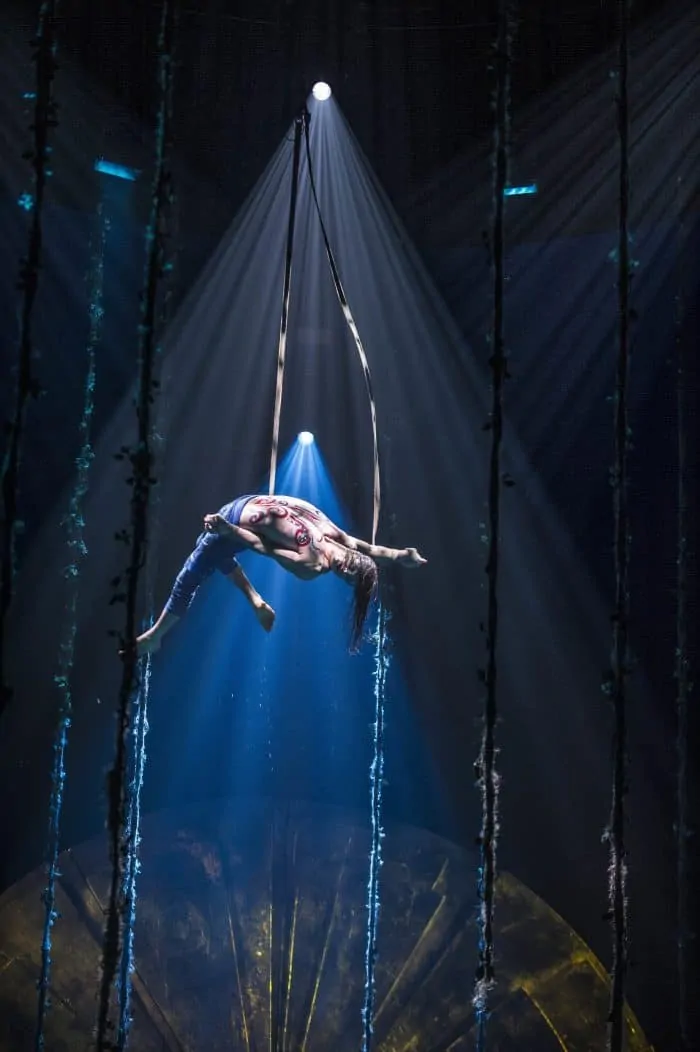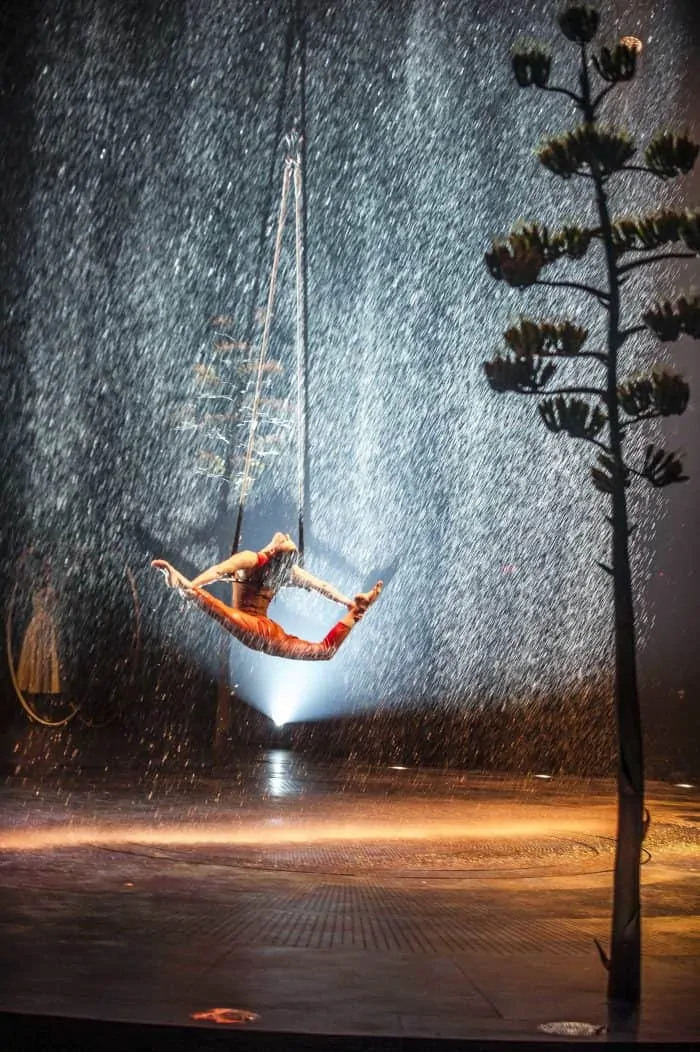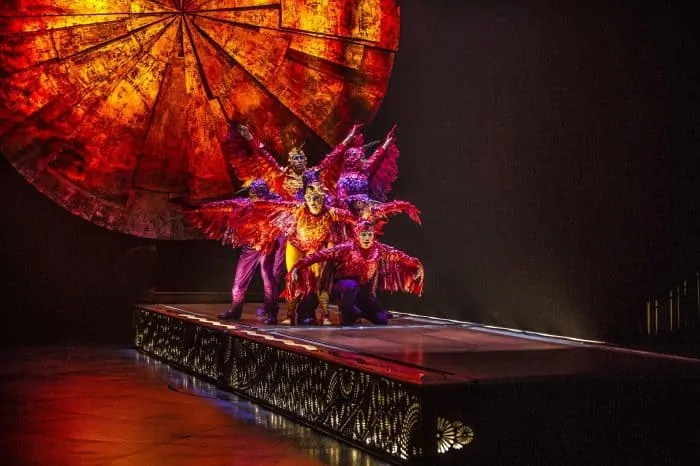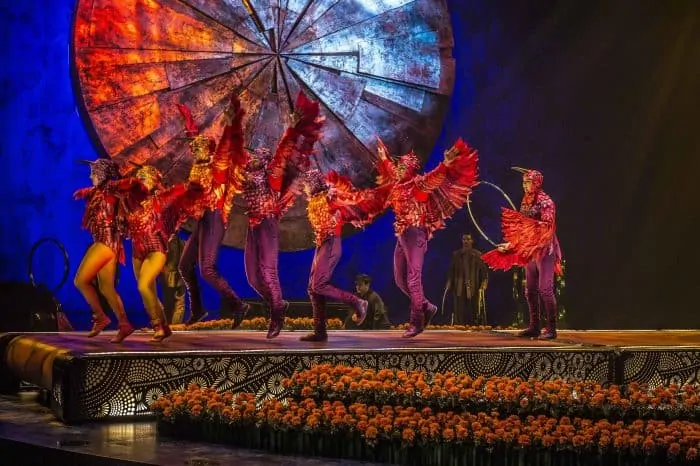Cirque du Soleil’s latest mind-bending creation is Luzia – A Waking Dream of Mexico, currently being performed in the Grand Chapiteau tent behind AT&T Park. The world tour of Luzia kicked off in Montreal in April of this year.
The tent is new, elaborate and specially designed for the unique performances associated with Cirque du Soleil. And the show is completely new as well, not only to please the company’s many loyal fans but also to maintain the interest of an international cast of gifted young athletes, acrobats, trapeze artists, trained clowns, dancers, musicians and singers. They are passionate about what they do.
Harnessing the creative energy of these bright talents is the task of Patricia Ruel, director of creation and Simon Carpentier, composer, among others. Inspired by the cultural richness of Mexico, the Luzia production features original music by Canadian composer Carpentier which is filtered through electro-pop and infused with Latin brass.
The Cirque stage is round and periodically it rotates, ensuring that audience members experience a complete vision. Mother Nature is metaphor as the evening opens to a lovely monarch butterfly running on a treadmill, with her long wings flowing. As her wings spread, the running woman personifies the legendary speed of the fleet-footed Tarahumara people. These indigenous people call themselves the Raramuri and live in and above the canyons of northern Mexico’s Sierra Madre Occidental. According to a National Geographic article by Cynthia Gorney, these people are extraordinary endurance runners, and have a strong attachment to spiritual obligations and other matters of the soul.
During recent interviews, Marshall Spratt commented on the complexity of the treadmills utilized by Cirque in the Luzia production. They are big and potentially dangerous; dancers were introduced to the treadmills slowly and carefully before routines were performed. There is a Chinese pole made of metal and covered in rubber; using it showcases the performers’ strength and agility. Large hoops through which red hummingbirds jump, big swings which cause the audience to gasp when swung high, bowling-shaped pins for juggling and hollow poles for elevating acrobats complete the props. And overseeing it all is a huge sun disk at the back of the stage, and the sacred heart appearing on costumes, an iconic image in Mexico.
Because falling water is a major part of Luzia, fabric for dresses and men’s suits had to be tested for appearance and durability when wet as well as when dry.
IN PHOTOS: ‘Luzia’ by Cirque du Soleil
Heather Reilly and Amanda Balius spoke of the challenges of set design and costume creation. Two years in advance the planning begins as they seek a match between beauty onstage and safety for the performers. Mending the costumes, and keeping natural fabrics free of wrinkles, are full-time tasks. Because falling water is a major part of Luzia, fabric for dresses and men’s suits had to be tested for appearance and durability when wet as well as when dry. Each female dancer has a different dress, so the uniqueness of each performer is emphasized. And wide skirts were the most comfortable design for spinning across the stage in large hoops.
The Cirque du Soleil tent was packed with families. No one was texting on a cell phone.
Mark Shaub pointed out in recent interviews that many of the young performers knew each other before joining the cast of Luzia. Two are siblings – Marta and Devin Henderson. They are among a San Francisco contingent which includes Maya Kesselman and Dominic Cruz.
Bringing it all together – lighting, set design, choreography, music, falling water, carefully rehearsed jumps and falls – the effort is gargantuan. What motivates this remarkable company with performances all over the world is “the profound influence of live theatre on the audience.”
The Cirque du Soleil tent was packed with families. No one was texting on a cell phone. All eyes were on the dancers, singers, musicians, acrobats, trapeze artists, and the delightful clown stranger who was a mute but expressive guide for the audience through this “waking dream of Mexico.”
A ride on the Metro into Mission Bay, a walk across the Third Street bridge, entering a tent bigger than a circus big-top – it’s all worth it. Prepare to be transported, and to get a little wet if you are in the first few rows when the water falls. No one minded, not at all.







